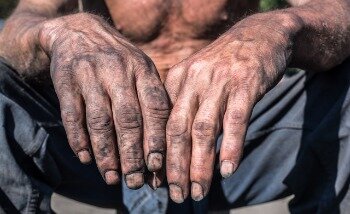Developing Countries Miners Face substantial Risk Inequality
Content
- Terrafirma Enhance Reports With Additional Information
- Mining Risk Assessment
- Do I Need A Coal Mining Risk Assessment?
- Why Choose Mining Insurance From Aig?
- Mining Risk Reporting: Emerging Trends In An Evolving Risk Landscape
It’s likely that you’re already familiar with the CON29M, a conveyancing report required by law, when dealing with property transactions in coal mining areas. This report is necessary for house purchase, mortgage lending, or before any development takes place. If you have a requirement for this or other mining risk assessment consultancy, please contact us to discuss your project. However, it is expected that the poll findings will support the long-standing assumption that coal mining is the prime ground stability risk that conveyancers need to be concerned about. Terrafirma have used new data technologies to apply a new risk model to each of the 173,000 recorded coal mine entries, analysing the zone of influence and the potential impact of a shaft on the use and value of a Site, at no extra cost. This enhancement brings a number of benefits for the conveyancer, purchaser and lender alike. Obtaining the most comprehensive mining searches and risk assessments is a vital part of any property transaction.
The improved RiskView reports can identify areas of land, which could be prone to ground instability and subsidence as a result of the natural underlying geology; this includes higher risk potential for landslides or sink holes. It also features information on real case subsidence insurance claims from leading insurance claims management firm, Crawford & Company. Coal Mining Development High Risk Areas are based on records where the Coal Authority has determined from records where potential land stability and other safety risks associated with former coal mining activities are likely to be greatest. Coal Mining Risk Assessments identify site specific coal mining risks and set out the proposed mitigation strategy to show that the site can be made safe and stable for the proposed development. Every Coal Mining Risk Assessment is produced by an experienced member of our specialist in-house team. Each assessment uses our detailed knowledge of coal mining information sources to consider a range of site specific coal mining risks. Your Coal Mining Risk Assessment will also include a Coal Authority Consultants Report as standard.
As a statutory consultee for development proposals within coal mining area, the Coal Authority has introduced a risk based approach to dealing with applications for development. This is part of their strategic objective to effectively manage the legacy of coal mining activities.
Terrafirma Enhance Reports With Additional Information
The Church of England Pensions Board is adding pressure by writing to all mining companies with tailings facilities asking them to confirm support for the standard, according to Adam Matthews, director of ethics and engagement. He believes that the standard is a “significant step” towards addressing the threat of tailings dams, though several other interventions would also be needed. The standard was launched in August 2020, and can be applied to existing and future tailings facilities, irrespective of location and ownership. It covers site selection, design and construction, management and monitoring, closure and post-closure, as well as emergency procedures should a dam collapse. Comprehensive data of the type collected by CDP is therefore necessary for stakeholders, including institutional investors, to make informed decisions,” she said in an interview. For example, BHP now secures more than 40% of its water from desalinated seawater, Moody’s says. But desalination is expensive, energy-intensive and might not be practical, depending on the location of the mine, it points out.

A search which indicates further assessment is required is often unwelcome information, however underestimating the potential impacts of ground instability could be devastating for homeowners, not to mention costly. So taking the time and investing in the right searches and mining risk assessment at the start of the transaction can save homeowners both time and money in the long term. The High Risk areas may contain coal mining legacy issues such as mine entries or shallow coal workings.
“Our culture has changed to the point where it’s not acceptable to get hurt or killed on the job, so we’ve made regulations to help prevent it.” The U.S. Mine Safety and Health Administration attributes this improvement to the mining industry’s increasing “culture of prevention,” which includes stronger regulations, safer machinery and more education and training initiatives in the last 25 years. Listed as the most dangerous industry for workers until 2001, mining is now outranked by industrial fishing, roofing and aircraft-related occupations, among others, according to the U.S.
From Chalk in the South East, to Fireclay in Yorkshire, mining risks vary dramatically across the UK. Vastly experienced geologists who specialise in mining, ground stability and a risk based approach. IMIU employ a team of highly skilled risk engineers all with extensive experience within the mining industry; the combined experience within the team is in excess of 350 years.
Mining Risk Assessment
Around £40 million of damages has been paid out to properties in the last decade – and that is just in coal mining areas. A mine entry recorded adjacent to a property and no records of it being filled/capped, potentially will impact property value up to but not often exceeding 20%. A mine entry recorded to be within or under a property and with no records of it being filled/capped, potentially will impact property value up to but not often exceeding 30%.
In South Africa, it says it is exploring the feasibility of using excess mine-water discharge and water stored on operational mines as a water source for the Limpopo province. In Peru, it is constructing a dam to create a water-supply reservoir to serve the Quellaveco mining project, the local community and agricultural industry in the future.
Other contributing factors to this inequality include mining techniques, age and depth of mines and geological challenges. In Australia, the researchers noted that mineworkers were able to make effective representations to management on health and safety matters and could stop dangerous work without fear of reprisal. The researchers set out to examine how workers are represented on health and safety issues in countries with differing economic profiles. More employer and state commitment towards worker representation on health and safety issues can better protect coal miners in developing countries, new research suggests. The British Geological Survey would be contacted to obtain any coal exploration, water well and site investigation borehole information. The Coal Authority is a statutory consultee for any planning application within a High Risk Area.
Just three years later, another collapse at the Brumadinho mine took the lives of 270 people. Given that mining operations are tied to locations where the resources exist, companies do not have the option to transfer operations to less risky environments. CDP notes that they must adapt their practices with the environmental constraints and needs of the communities around them or risk losing their licence to operate. Many countries where mining is located are exposed to decreasing water availability, including Peru, Chile, Australia, South Africa and Mongolia, a 2019 report by Moody’s pointed out. In the next 20 years, all of these countries are predicted by the World Resources Institute to become more water-stressed, making mining more difficult and costly, it says. The research report notes that a lack of resources in the mines they visited in India, for example, “impacted strongly” on the “substantial inequality in their risk profiles”.
A Terrafirma search delivers a multi-mineral instability risk assessment in a single report which investigates the potential issues of abandoned mineral workings and the problems they can cause property and land. Take part in our quick poll “What percentage of all mining-related ground stability risks does coal mining account for? We’re testing conveyancers assumptions about mining risks in the UK by asking “What percentage of all mining-related ground stability risks does coal mining account for? Landmark’s new Law Society approved, and accredited official CON29M report provides cost-effective access to property-specific information relating to past, current and future underground and surface coal mining activities. It satisfies the requirements of the conveyancing handbook, with analysis clearly presented in a simple way and includes a professional opinion as standard by experienced Minerals Surveyors, with practical next steps.

The sector is a major user of water, which is needed to get the raw material from the ground, to extract the desired element from the raw material, and in transport and storage of excess slurry. Mining companies may think they’re an unlikely target for cyberattacks, but as reliance on autonomous and digital technology grows, so too does the cybersecurity risk. But with the growing risks associated with mining automation, cybersecurity also needs to be a core aspect of safety.
Despite such developments, a number of researchers view the mining sector among the world’s most uncertain and hazardous industries. Although the sector utilizes risk management tools appropriately, several large-scale mining projects have failed as a result of neglect or underestimation of hazards. Total risk management of a new project remains a goal to be attained so as to enhance reliability of decisions and make mining organizations safer and more secure. The intent of this paper is to provide researchers and practitioners a preliminary portrait of the risks related to new mining projects. To attain this objective, the authors have primarily used results from research undertaken in the field. They completed this portrait using the results of hazard identification studies that they conducted in an open-pit mining project in Quebec.
Do I Need A Coal Mining Risk Assessment?
“If you just do things the way you’re supposed to,” Sbaffoni said, “there’s a good chance of finishing out a long career in the mining industry, and you can look forward to a good retirement.” “There’s no question mining is a dangerous occupation, but it doesn’t have to be unsafe,” said Joseph Sbaffoni, director of Pennsylvania’s Bureau of Deep Mine Safety.

Dunelm have a long experience and significant expertise in carrying out Coal Mining Risk Assessments, which are becoming a planning requirement in coal mining areas. “Until recently, hazards such as sinkholes, subsidence and ground instability were seen to be a generic physical risk that could not be practically actioned, did not affect a property transaction and held no tangible links to any financial or legal liability. Terrafirma have updated their CON29M with several new features to offer a new level of due diligence and efficiency, as they continue to change the way in which property professionals across the UK approach coal mining activity.
During this study, a number of data-gathering techniques were used, including documentation analysis, collaborative field observations, and interviews with managers and workers. This work demonstrates the possibility of identifying a number of categories of known risks and uncertainties not recently taken into account in any systemic or systematic way in mining project risk management. In this paper, identified risks are categorized hierarchically to show the impact and possibility of occurrence of each for every project phase. Despite having a number of limitations, this study enables construction of a risks portrait indispensable for completing a reliable and rapid assessment of mining project hazards. Earth Environmental have a number of competent in-house staff who can assist developers at any stage of a project, from coal mining risk assessments and site investigations through to remediation works (e.g. drill and grouting). The website offers a choice of reports – some cover other risk factors as well as coal mining, eg general subsidence, or environmental and flood risk.
- Every Coal Mining Risk Assessment is produced by an experienced member of our specialist in-house team.
- A mine entry recorded adjacent to a property and no records of it being filled/capped, potentially will impact property value up to but not often exceeding 20%.
- Obtaining the most comprehensive mining searches and risk assessments is a vital part of any property transaction.
To achieve a future where temperature rise is kept below 2C, more than 3 billion tonnes of minerals and metals will be needed to deploy wind, solar and geothermal power, and energy storage. The production of minerals, such as graphite, lithium and cobalt, could increase by nearly 500% by 2050 to meet these needs, according to a World Bank report in May. The Top 40 are better placed than most to do big deals but face an uncertain outlook and practical constraints.
Mining Risk Reporting: Emerging Trends In An Evolving Risk Landscape
For the 33 trapped Chilean miners potentially facing months in crammed quarters, their immediate health may be threatened by the air quality in the chamber and the limited ability to move, which can lead to blood clots. But even without such catastrophes, miners contend with many daily health dangers from working around dust, heavy metals, hazardous gases, fumes and loud noises. Deep mining is often linked to more modern mining processes and generally regulated, recorded and remediated.
You’ll get the search results immediately- they’ll tell you if you need to order a mining report. Whether you are constructing a single dwelling or a large strategic site, we will provide the right advice and support to take your development forward. Sbaffoni said he likens the miners in the current Chilean cave-in, which occurred Aug. 5 in a copper and gold mine, to “people in a submarine. As long as they’re provided food, water and communications, I feel they’ll be successful in rescuing them.”
This allows us and our clients to benchmark performance year-on-year and provide a concise insight for the insurance industry on the level of exposure being presented by any operation. Each operation is assessed using a comprehensive risk assessment model, MinRAM, developed by IMIU that is able to provide a comparative measurement of loss probability and consequence. This is a unique and powerful model which enables each mine to be benchmarked against any other operation regardless of the type of mine or commodity.
What we have learnt so far is that coal mining may present a significant problem to property transactions, property value and livelihoods located in affected areas. These vertical or horizontal entrances to underground mines are numerous, poorly documented and often unreliably capped. It is a common rule of thumb in engineering and mining geology that for every recorded mine entry, there are two more unrecorded within 100 metres and with 172,000 recorded coal mine entries and over 200,000 recorded non-coal mining entries. Similar to deep and shallow mining, despite being numerous, the likelihood of a mine entry collapsing is proportionately small and the statistical chance of mine entry causing damages to a property are even smaller. Every year, more than 500 of these coal mining sinkholes appear across the UK, from the valleys of South Wales to the suburbs of Newcastle and their impact can be devastating to home and business owners alike. Almost a third of buildings (29%) in the UK are underlain by coal mines – that does not even begin to include other mineral mining industries.



